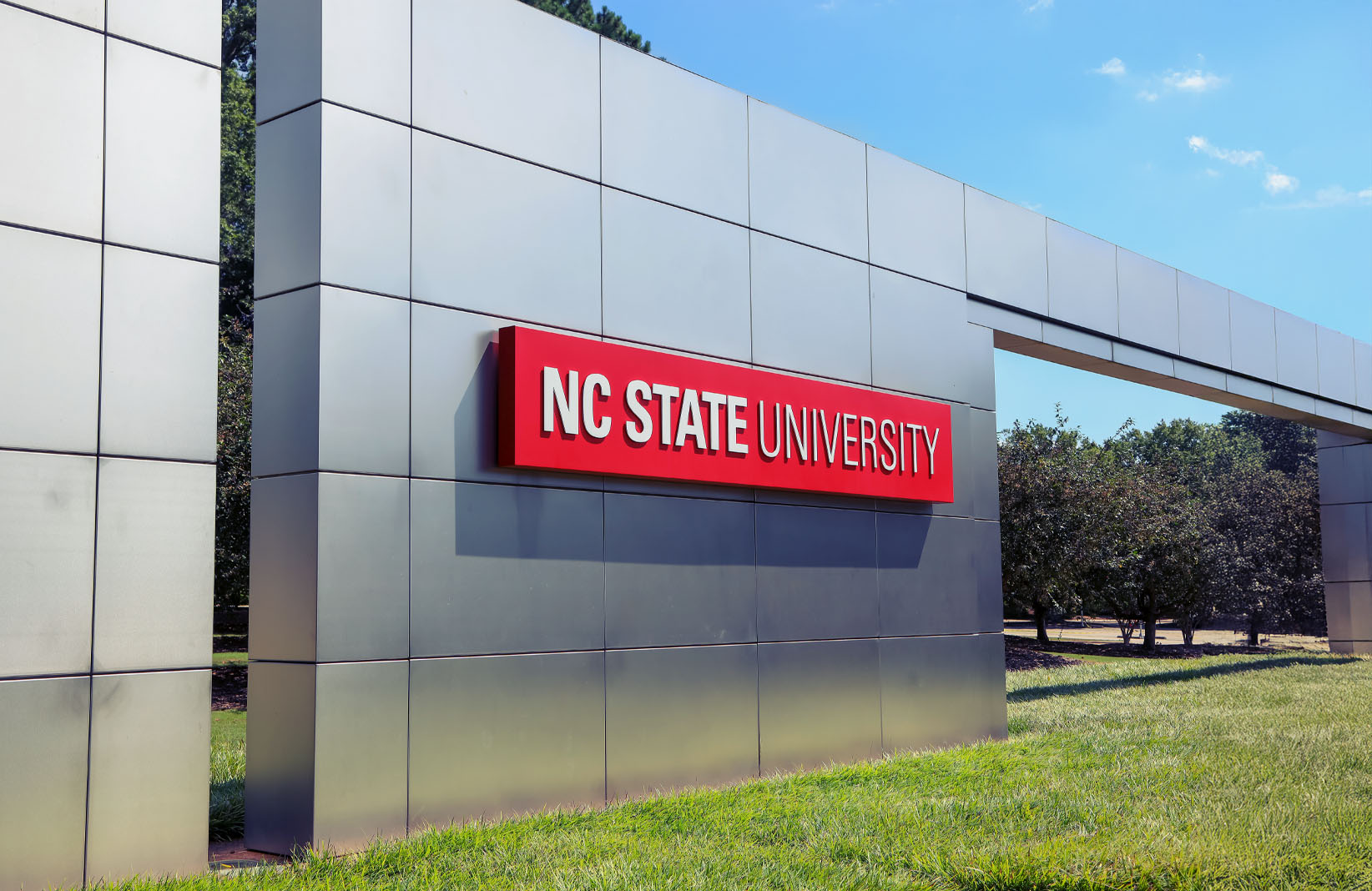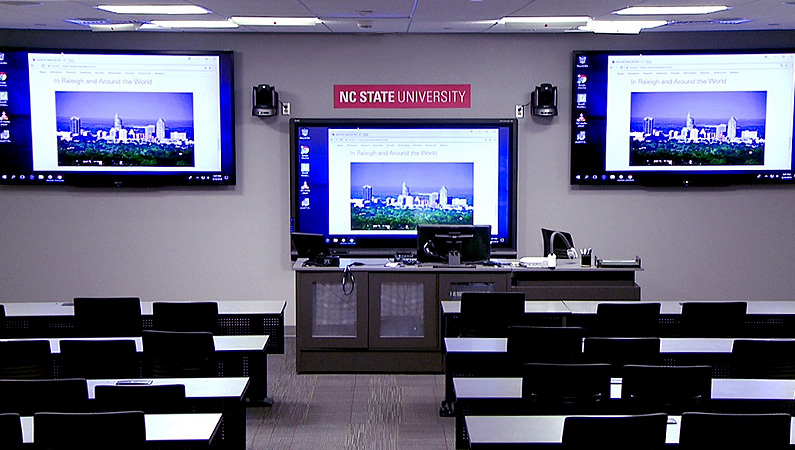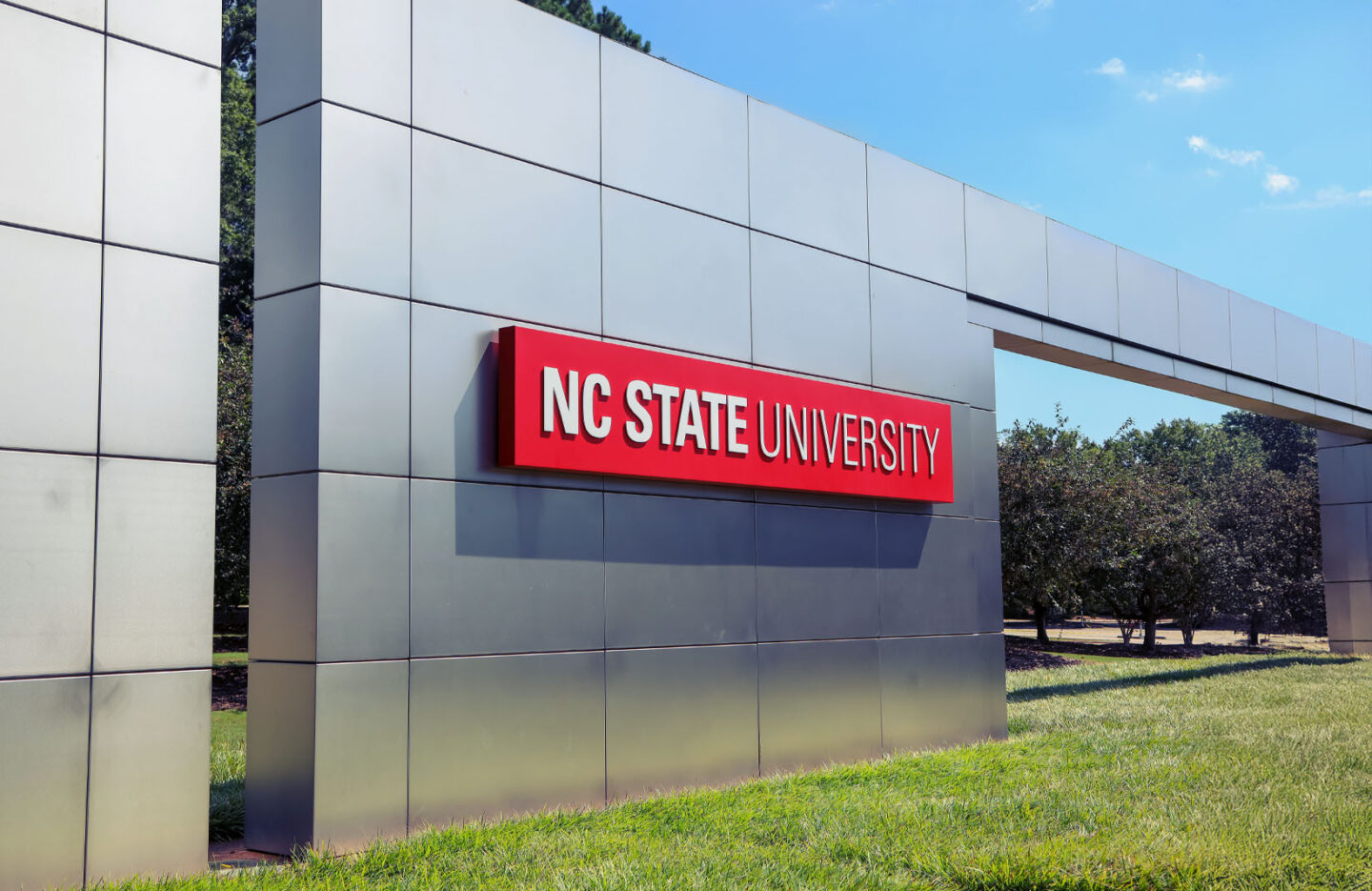The challenge
What has always set NC State apart is its broadcast-standard approach to production of its distance education courses. The program’s original workflow was created with a real-time production process, which included live transmissions and synchronous connections for designated courses every semester.
Studio Classrooms, now referred to as media-enhanced classrooms, were used for traditional on-campus teaching, while also serving as full production studios with specialized lighting, a production switcher, character generators, desktop or ceiling microphones, and up to six cameras where required.
As the distance education programs grew, NC State began to see annual enrollment increases of 15% to 20%. The rapid growth called for a swift transition from a control room model with dedicated technicians or video directors, to a centralized infrastructure.
One challenge was how to repurpose existing fiber previously used for microwave transmissions. With a centralized control room (CCR) located at Ricks Hall Annex at the heart of the main campus, all existing fiber runs had to be rerouted and more runs added to link multiple buildings ― with two located more than 10 kilometers away on NC State’s Centennial Campus.
Fiber links were being used simply as single-mode, point-to-point connections, providing the capacity for just four video signals per classroom and placing serious limitations on the number of signals that could be transmitted back to the CCR. The AV design solution was to put a multiviewer in each classroom and send quad-split screen feeds over the fiber to the CCR.
Moving forward, the DELTA team determined they needed to upgrade to a standards-based open architecture that would allow much greater flexibility for the next generation of remote monitoring and control in the CCR and would keep the door open for future developments.




